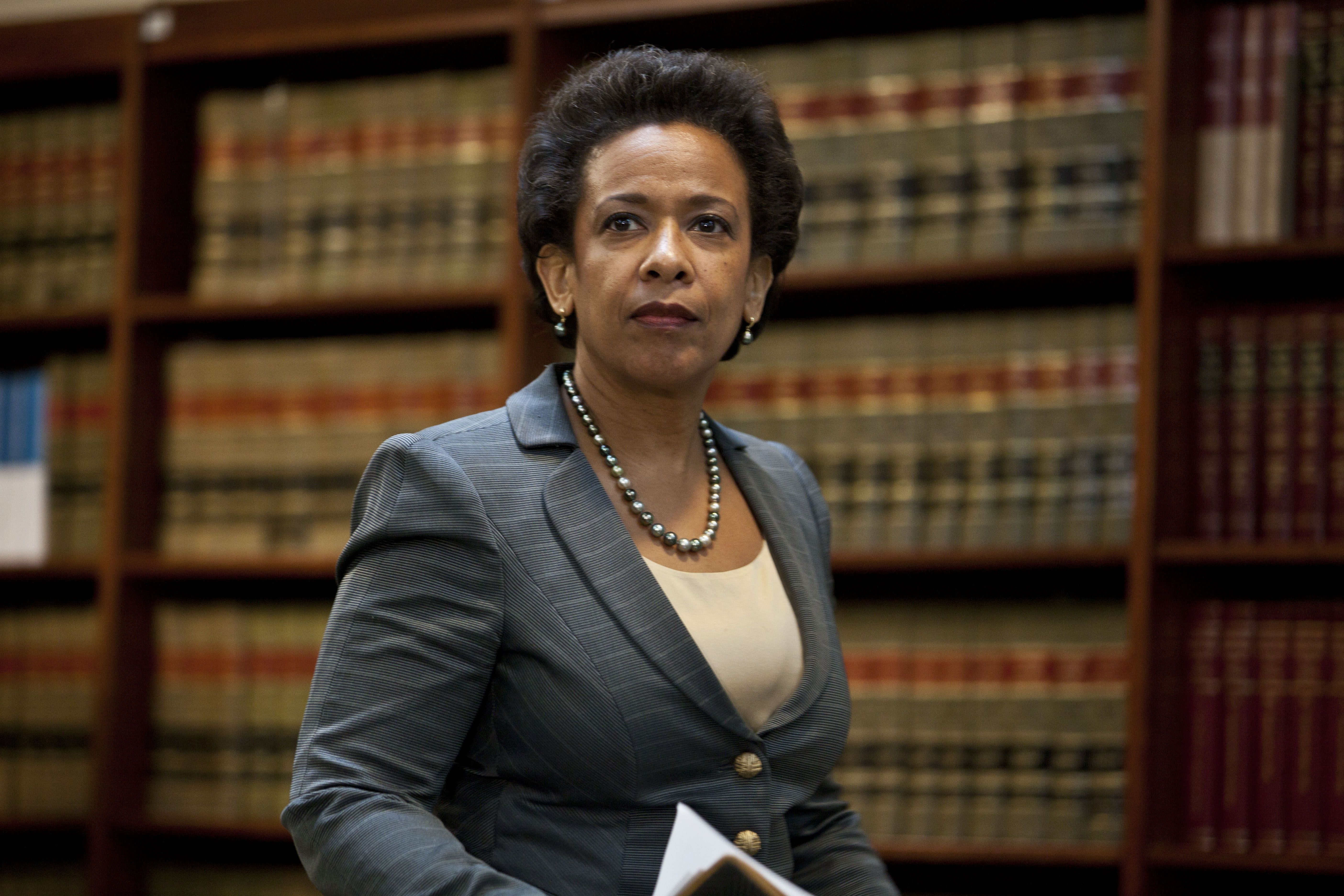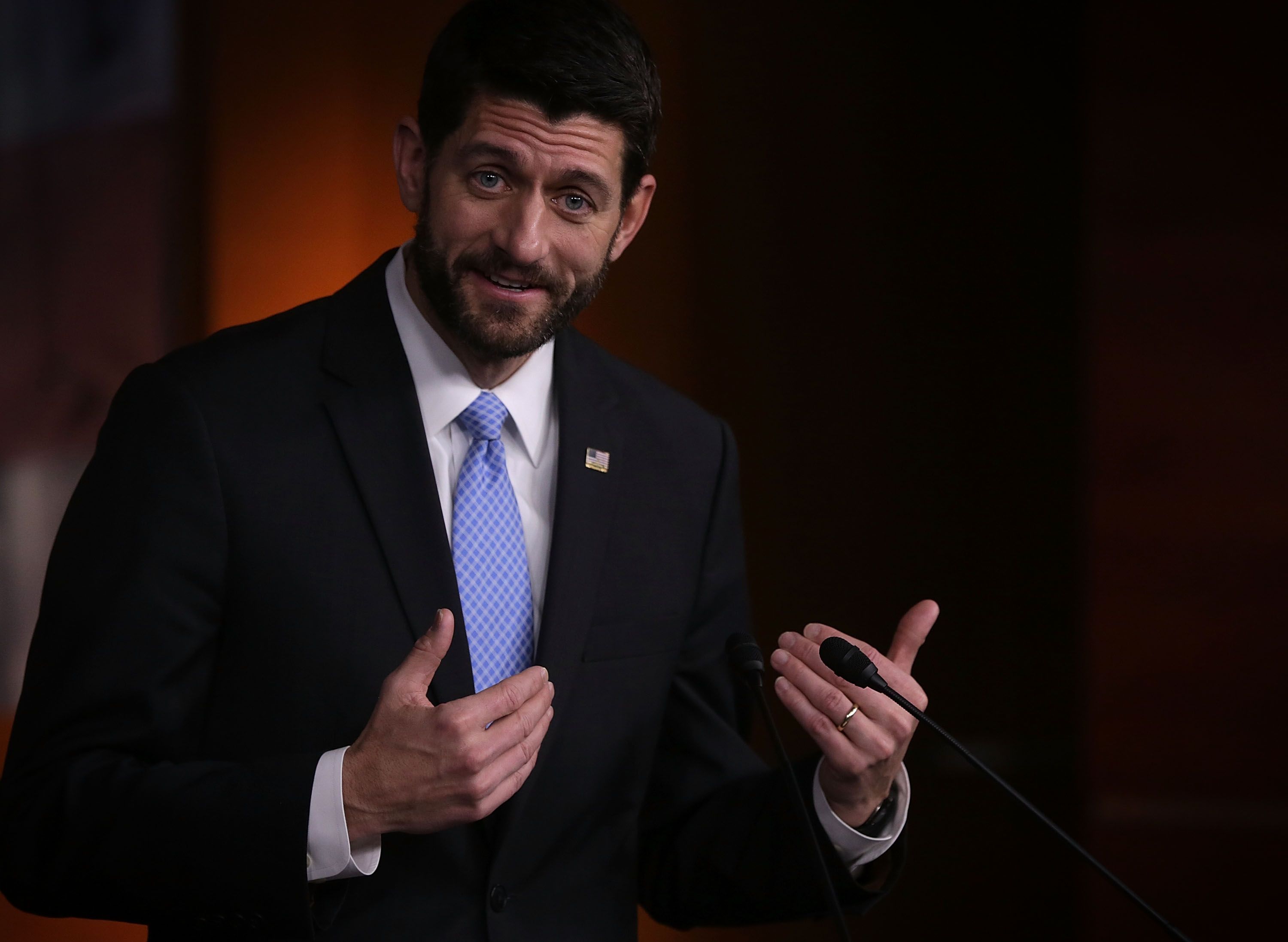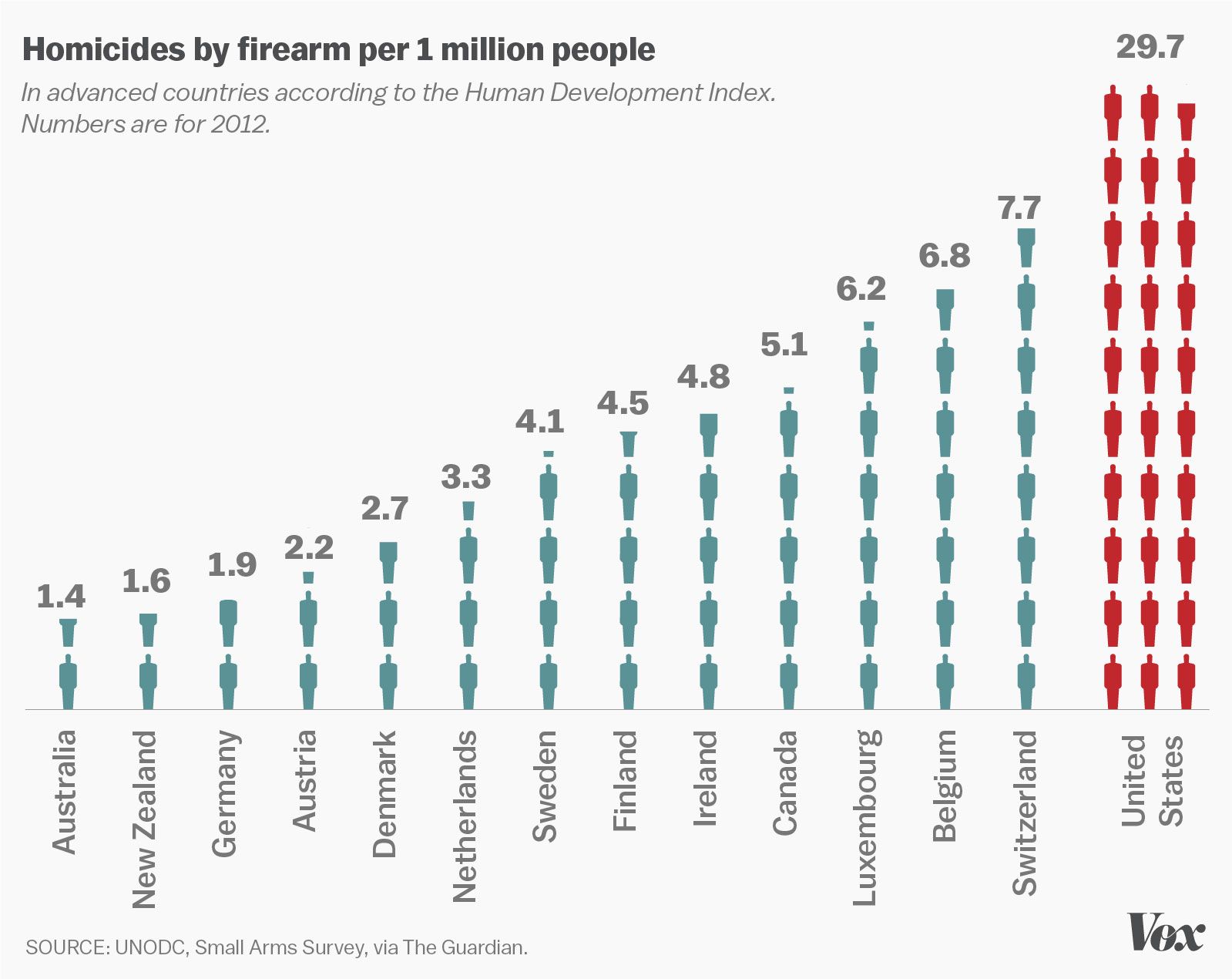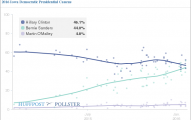
After high-profile mass shootings, President Barack Obama has urged the American people to call on Congress to pass measures that would restrict access to guns and, hopefully, reduce gun violence. But after multiple pleas, Congress hasn’t acted, even after the grisly mass shooting at Sandy Hook Elementary School in December 2012.
So Obama is now acting on his own — with executive actions.
Obama met with Attorney General Loretta Lynch on Monday to consider what he can do without congressional legislation to reduce gun violence in America, which kills many more people in the US than other developed nations. In a press conference after the meeting, White House officials announced a plan they had been working on for months behind the scenes to address gun violence.
The changes will attempt to close what’s widely (but misleadingly) known as the “gun show loophole,” as well as increase the efficiency of the federal background check system to avoid cases from falling through. The executive actions will also take smaller steps, ranging from improving the tracking of lost or stolen guns to encouraging technological improvements to, in theory, make firearms safer.
This would not be the first time Obama has taken executive action on guns. In 2013, after Congress failed to pass gun control legislation following the shooting at Sandy Hook Elementary School, Obama signed 23 executive actions and then a few follow-up actions that generally tightened the background check system.
But Obama’s latest actions appear to be the boldest, touching on one of the longest-running issues with federal gun control laws and a broader hot-button debate about what to do about America’s extraordinary levels of gun violence.
There are risks to Obama acting without congressional approval. Critics of the administration have already suggested that they will challenge new executive actions in court. Not getting legislation in the books also means that a President Ted Cruz (or Marco Rubio, Donald Trump, and so on) could unilaterally reverse Obama’s actions. Shortly before the announcement of the plan, a congressional Republican also threatened to block funding for the Justice Department to stop the executive actions.
The Obama administration has pushed on anyway, arguing in an email, “The president has made clear the most impactful way to address the crisis of gun violence in our country is for Congress to pass some common sense gun safety measures. But the president has also said he’s fully aware of the unfortunate political realities in this Congress. That is why he has asked his team to scrub existing legal authorities to see if there’s any additional action we can take administratively.”
What Obama’s executive actions on guns will do

Ramin Talaie/Getty Images US Attorney General Loretta Lynch.
Here’s what the Obama administration plans to do:
- The federal government will issue a guidance that will narrow who can sell guns without a federal license, based on an evaluation of the circumstances surrounding individual gun sales. The idea is to reduce the number of for-profit dealers — as opposed to collectors or people who only give or sell guns to family members or friends — who avoid background checks, whether they’re at a store, at a gun show, on the internet, or anywhere else.
- The FBI will hire more than 230 more people to help run background checks — an increase of more than 50 percent to the current staff. Lynch said this was in part needed to keep up with rising demand. “We’re looking to improve the efficiency and response time of the system,” Lynch said.
- The government will also require background checks for people who try to buy restricted firearms through a legal entity, such as a corporation or trust. People were able to avoid background checks in the past through these entities.
- The Department of Health and Human Services will finalize a rule regarding health record privacy laws to remove barriers to states providing mental health records to the background check system.
- The administration will enforce tighter rules for reporting guns that are lost or stolen on their way to the buyer — in order to make it easier for law enforcement to track down missing firearms.
- Federal agencies will encourage and fund more research into technologies that can make guns safer, largely to reduce the risk of accidents.
In addition to these measures, the administration will continue pushing on Congress to pass tighter gun control laws, and direct more funds to enforcing existing gun laws and for mental health treatment.
Federal background checks are rife with loopholes
Obama’s executive actions are a small but significant tweak to existing laws. In the US, there are several restrictions in federal law to buying a gun. Generally, the idea is that Americans who are underage, have serious criminal backgrounds, or are mentally ill should not be able to purchase a firearm.
Whether someone falls into any of these categories is typically evaluated through a background check: Under the federal system, licensed dealers are required to run these checks before they can sell someone a gun, typically by having the FBI check a person’s criminal record, mental health history, and other factors. If someone fails a background check, he or she can’t legally buy a gun.
But the system is riddled with loopholes. The most well-known way to bypass background checks is the private sales loophole: If someone purchases a gun from a private seller, such as a friend or family member, no gun background check is required. This is often mischaracterized as the “gun show loophole,” under the assumption that people can simply go to a gun show and buy a gun without getting a background check. But licensed dealers at gun shows still have to carry out a background check. The actual loophole is that someone can meet with a private seller at a gun show — or, increasingly, over the internet — and buy a firearm from that person without a background check. In other words, the gun show doesn’t create a loophole; the private sale does.
An equally big problem is that the system of background checks is notoriously underfunded, understaffed, and underresourced. Although there are no waiting periods under federal law, a check that turns out inconclusive can be extended for three business days. But these three days are a maximum for the government — and sometimes the three days lapse without the FBI completing its check, and a buyer can at that point purchase a gun without the completed check.
The FBI admitted that something like this happened for the shooter who killed nine people at a predominantly black church in Charleston, South Carolina, in June 2015: The shooter in that case should have failed a background check for a handgun purchase after admitting to illegally possessing controlled substances in the past, but the FBI examiner did not obtain the shooter’s record in time.
The federal background check system also largely relies on states’ reports, including some data for mental health history and criminal records. Since states have their own budget issues to deal with, or may simply ideologically oppose the idea of background checks, states’ noncompliance can create yet another way the system can fail to stop someone who shouldn’t buy a gun from obtaining one. (State laws treat guns in a wide variety of ways; Slate has a good rundown of the differences.)
Obama’s executive actions don’t appear to completely close all these loopholes and fault in existing law, but they do take steps to tighten current restrictions on firearms and ensure that federal officials can actually enforce the law that’s on the books.
Following the mass shooting in Sandy Hook Elementary School in which a gunman killed 20 children, six adults, and himself, Congress was pressured to pass a bill that would have tightened the private sales loophole and potentially taken other steps toward restricting access to guns. But negotiations over the bill eventually fell apart, leading Obama to act on his own.
Obama is dealing with a Congress that won’t act on gun control

Alex Wong/Getty Images
It can be difficult to understand how the US hasn’t done much to combat gun violence for years. America is unique not just in terms of gun violence but in terms of gun ownership — the country has by far the highest rates of gun ownership in the world. The research clearly shows that more guns mean more gun violence, so all those guns are leading to more deaths. And the public widely supports closing the loopholes in the law. Yet even with this research and public support, and despite thousands of mass shootings during Obama’s time in office, Congress has decided not to act.
The reasons for this are complicated, but they’re generally rooted in America’s strong gun culture and the powerful lobby behind that culture.
The single most powerful political organization when it comes to guns is, undoubtedly, the National Rifle Association, which has an enormous stranglehold over conservative politics in America.
Anytime there’s an attempt to impose new forms of gun control, the NRA rallies gun owners and other opponents of gun control to kill such proposals. These gun owners make up a minority of the population: anywhere from 34 to 43 percent of households, depending on which survey one uses. But that population is a large and active enough constituency, particularly within the Republican base, to make many legislators fear that a poor grade from the NRA will end their careers.
As a result, conservative media and politicians take the NRA’s support — especially the coveted A-to-F ratings the organization gives out — very, very seriously. Sometimes politicians will go to absurd lengths to show their support for gun rights. For example, Sen. Ted Cruz (R-TX) last year starred in a video, from IJ Review, in which he cooked bacon with — this is not a joke — a machine gun.
Although several campaigns have popped up over the years to try to counteract the NRA, none has come close to capturing the kind of influential hold that the organization has. Some of the groups — such as StopTheNRA.com, in part funded by Democratic donor Ken Lerer — didn’t even last a few years.
Kristin Goss, author of The Gun Debate: What Everyone Needs to Know, said this might be changing. She argued that newer gun control groups like Everytown for Gun Safety and Americans for Responsible Solutions are much more organized, are better funded, and have more grassroots support than gun control groups have had in her 20 years covering this issue. As a result, Democrats at the state and federal level seem much more willing to discuss gun control.
But supporters of gun control face a huge obstacle: far more passionate opponents. As Republican strategist Grover Norquist said in 2000, “The question is intensity versus preference. You can always get a certain percentage to say they are in favor of some gun controls. But are they going to vote on their ‘control’ position?” Probably not, Norquist suggested, “but for that 4-5 percent who care about guns, they will vote on this.”
What’s behind that passion? Goss, who’s also a political scientist at Duke University, suggested it’s a sense of tangible loss — gun owners feel like the government is going to take their guns and rights. In comparison, gun control advocates are motivated by more abstract notions of reducing gun violence — although, Goss noted, the victims of mass shootings and their families have begun putting a face on these policies by engaging more actively in advocacy work, which could make the gun control movement feel more relatable.
There is an exception at the state level, where legislatures have passed laws imposing (and relaxing) restrictions on guns. In 2014, for instance, Washington state and Oregon passed laws ensuring all guns have to go through background checks, including those sold between individuals. “There’s a lot more going on than Congress,” Goss said. “In blue states, gun laws are getting stricter. And in red states, in some cases, the gun laws are getting looser.”
Still, the NRA’s influence and its army of supporters push many of America’s legislators, particularly at the federal level and red states, away from gun control measures — even though some countries that passed these policies have seen a lot of success with them. From Obama’s perspective, that forced him to act alone to get something done on guns.
Universal background checks would help, but they likely wouldn’t bring gun violence down to other developed countries’ levels

Javier Zarracina/Vox
Although Obama’s executive action will help slightly restrict access to guns, it won’t come anywhere close to bringing levels of gun violence down to the levels of other developed countries. Neither would the Senate bill that ultimately failed. The reason for that is simple: The problem is, fundamentally, that the US has a lot of guns, so any measure that doesn’t significantly reduce the number of guns will ultimately fall short of fully addressing violence.
The research on this is very clear. Reviews of the evidence by the Harvard School of Public Health’s Injury Control Research Center have concluded that more guns lead to more gun violence. Other factors, such as socioeconomic issues, obviously contribute to violence, but guns are the one issue that makes America unique relative to other developed countries in comparable socioeconomic circumstances.
Take, for instance, this chart, from a 2007 study by Harvard researchers, showing the correlation between statewide firearm homicide victimization rates and household gun ownership after controlling for robbery rates:
A more recent study from 2013, led by a Boston University School of Public Health researcher, reached similar conclusions: After controlling for multiple variables, the study found that a 1 percent increase in gun ownership correlated with a roughly 0.9 percent rise in the firearm homicide rate at the state level.
This holds up around the world. As Vox’s Zack Beauchamp explained, a breakthrough analysis in 1999 by UC Berkeley’s Franklin Zimring and Gordon Hawkins found that the US does not, contrary to the old conventional wisdom, have more crime in general than other Western industrial nations. Instead, the US appears to have more lethal violence — and that’s driven in large part by the prevalence of guns.
“A series of specific comparisons of the death rates from property crime and assault in New York City and London show how enormous differences in death risk can be explained even while general patterns are similar,” Zimring and Hawkins wrote. “A preference for crimes of personal force and the willingness and ability to use guns in robbery make similar levels of property crime 54 times as deadly in New York City as in London.”
How can the country address this? The research shows tightening existing gun control measures in the US would help. But as Harvard’s David Hemenway told Vox’s Dylan Matthews, it would likely take decades for the mild gun control measures proposed in the US to have a significant impact. “It’s all speculation,” Hemenway said. “I suspect it would take a while (decades) for the US to get down to gun violence levels of other developed countries because a) we have so many guns which are durable, and b) we have a gun culture — we tend to use guns more often in more situations than citizens of other developed countries.”
To have a more immediate impact, then, the US would have to find a way to quickly remove the number of guns in circulation. Other countries have actually done that: In Australia, after a 1996 mass shooting, lawmakers passed new restrictions on guns and imposed a mandatory buyback program that essentially confiscated people’s guns, seizing at least 650,000 firearms.
According to one review of the evidence by Harvard researchers, Australia’s firearm homicide rate dropped by about 42 percent in the seven years after the law passed, and its firearm suicide rate fell by 57 percent. Although it’s hard to gauge how much of this was driven by the buyback program, researchers argue it likely played some role: “First, the drop in firearm deaths was largest among the type of firearms most affected by the buyback. Second, firearm deaths in states with higher buyback rates per capita fell proportionately more than in states with lower buyback rates.”
Still, similar measures would be very difficult to pass in America, due to the strength of gun culture and the gun lobby in the US — pushing Obama to act without Congress with a much smaller policy tweak.
Watch: America’s biggest gun problem is the one we don’t talk about
via : Vox – Policy & Politics





